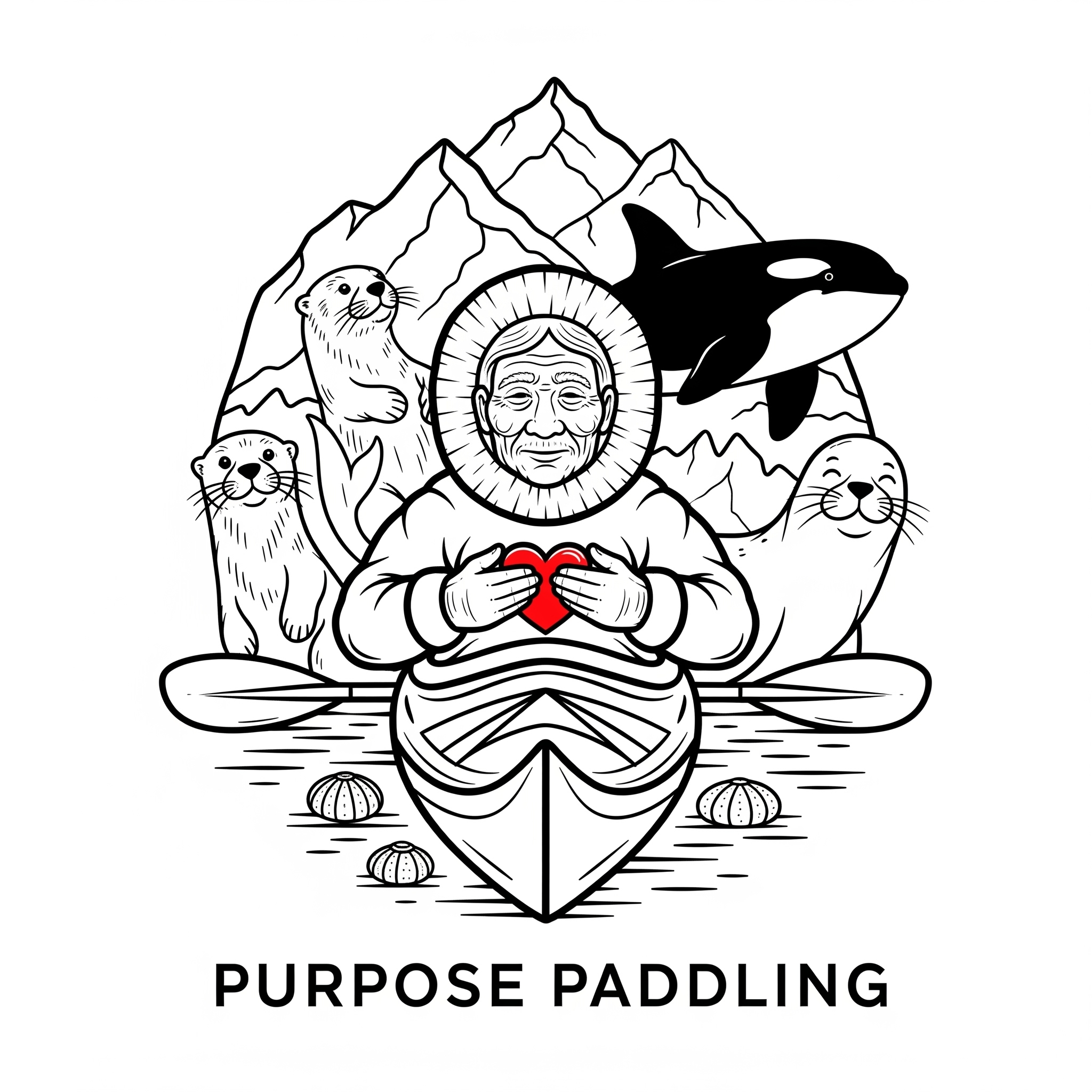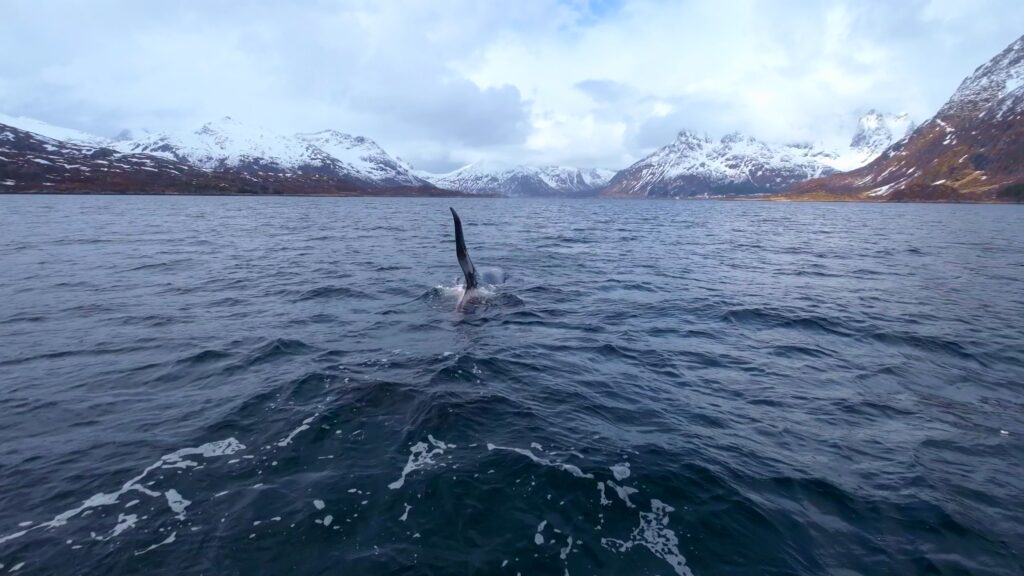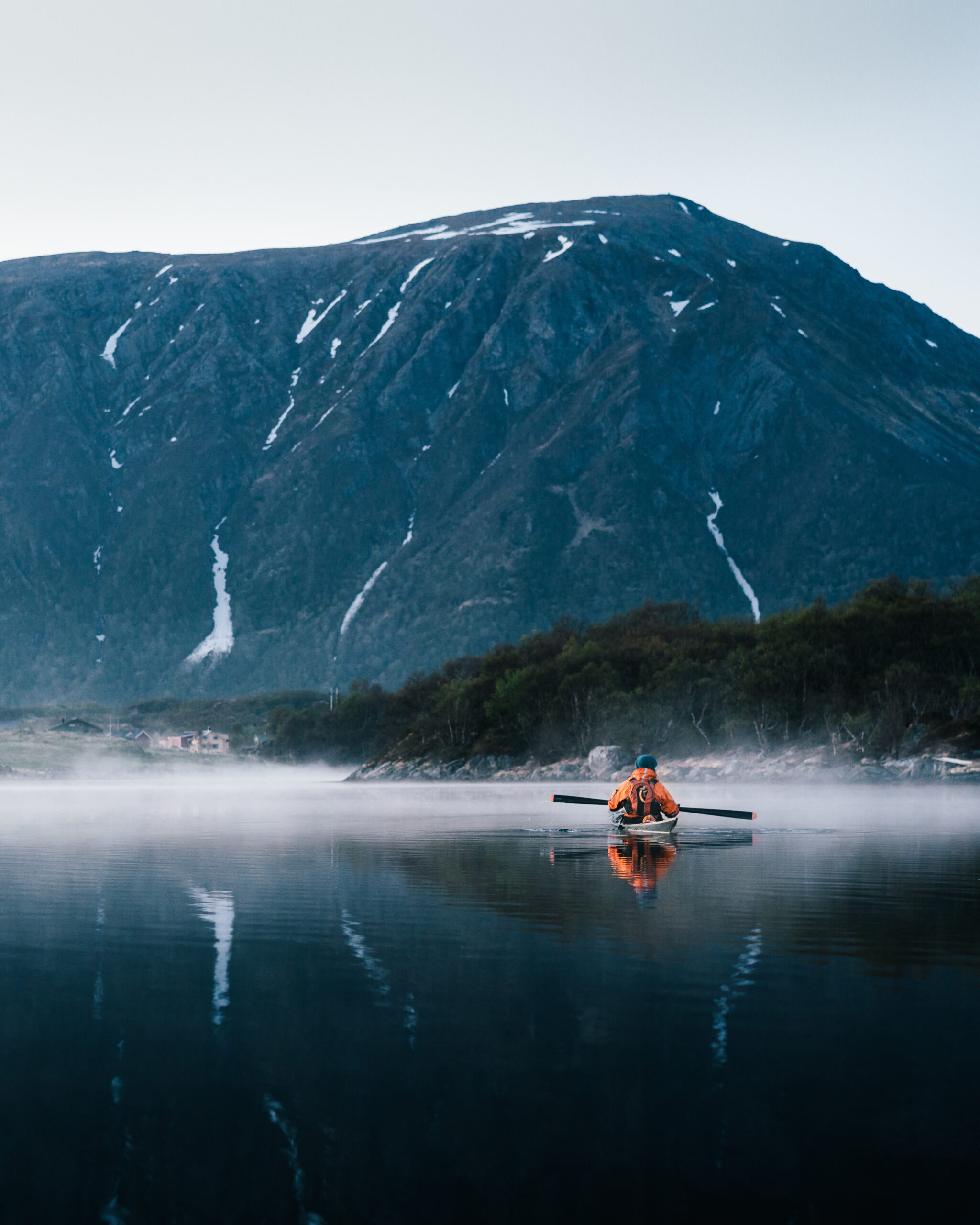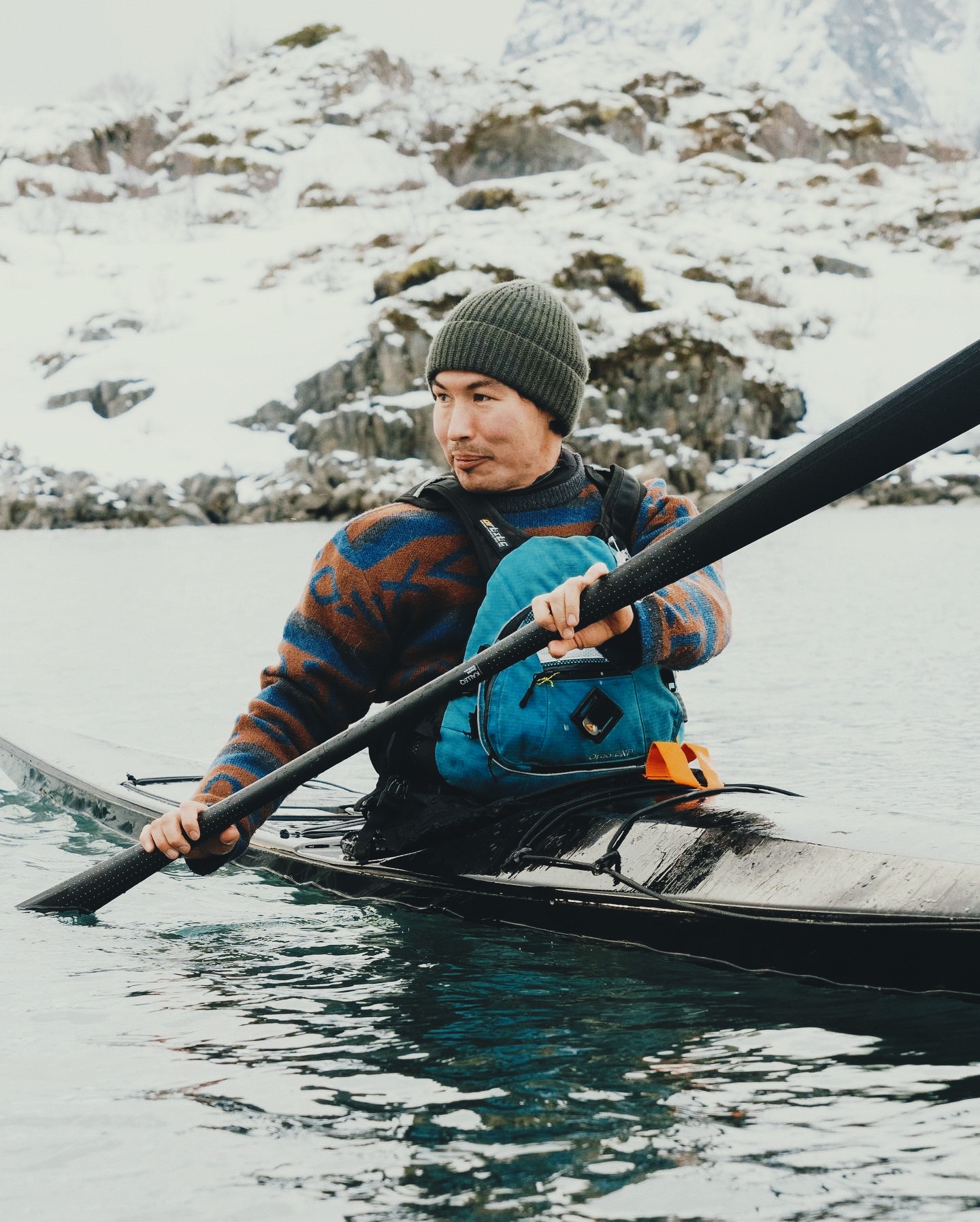Tucked high above the Arctic Circle, Norway’s Lofoten Islands are known for their raw, untamed beauty—jagged peaks, sweeping beaches, and a coastline that feels worlds away from the ordinary. But beyond the landscape, there’s something else that draws travelers north: the chance to spot killer whales in the wild. These encounters, however, are rare and never guaranteed. Orcas move with the seasons and the fish, and their appearances in Lofoten’s fjords can be unpredictable. Still, for paddlers, photographers, and wildlife lovers, the possibility of witnessing them in their natural element makes every outing an adventure—and when it happens, it’s unforgettable.
Imagine paddling quietly through glassy fjords or standing on a rocky shore as a pod of orcas breaks the surface nearby. It’s moments like these that define the magic of Lofoten. In this guide, we’ll cover when and where to see killer whales, the best ways to explore the region’s rich wildlife, and how to make the most of your time in one of Norway’s most extraordinary places.
What to know before you go: quick guide to wildlife and whale watching in Lofoten
| Topic | Details |
|---|---|
| Where you are | The Lofoten Islands, northern Norway—above the Arctic Circle |
| Best time for orcas | September to June, during the herring migration |
| What you might see | Killer whales, sea eagles, puffins, seals, otters, Moose and reindeer |
| Best way to experience it | Quiet paddles, wildlife safaris, coastal hikes |
| Why go with a guide | Safety, local knowledge, and deeper connection to the place |
| What to bring | Warm layers, camera, curiosity, and respect for nature |
When killer whales visit Lofoten: a seasonal spectacle
Note: While seeing orcas in Lofoten is a breathtaking experience, it’s important to understand that these sightings are rare and never guaranteed. Orcas are wild animals following their own rhythms, and their presence in the fjords can vary from year to year. However, Purpose Paddling stays closely connected with the local community and fellow nature observers, so we are often among the first to know when and where killer whales have been spotted. Our deep local insight helps increase the chance of a meaningful encounter, even in such an unpredictable natural setting.
Timing is everything if you’re hoping to see killer whales in Lofoten. The best window is between September and June, when massive shoals of herring flood the fjords. This natural event draws orcas into the area to feed, often in large, social groups. One of the most fascinating behaviors to watch is carousel feeding, where whales herd fish into tight balls, then take turns stunning and eating them. It’s coordinated, powerful, and unforgettable.
Winter might seem like an unlikely time for wildlife watching, but in Lofoten, it’s pure magic. The low Arctic sun casts a golden light across the water, and the short days are filled with moody skies and quiet fjords—ideal conditions for both spotting wildlife and snapping incredible photos.
Kayaking with orcas: a front-row seat to nature
There’s something profoundly moving about seeing an orca from the seat of a kayak. Unlike louder motorized boats, kayaks let you slip quietly through the water, creating minimal disturbance and allowing you to get closer to nature. It’s an experience that feels personal—sometimes even spiritual.
Small-group kayak tours, like those run by Purpose Paddling, offer the chance to explore hidden fjords where orcas often swim. Led by seasoned guides like Kristian Louis Erni Jensen, these trips are rich in both safety and storytelling. His deep connection to the region and its wildlife adds an extra layer to the experience, making each encounter even more meaningful.
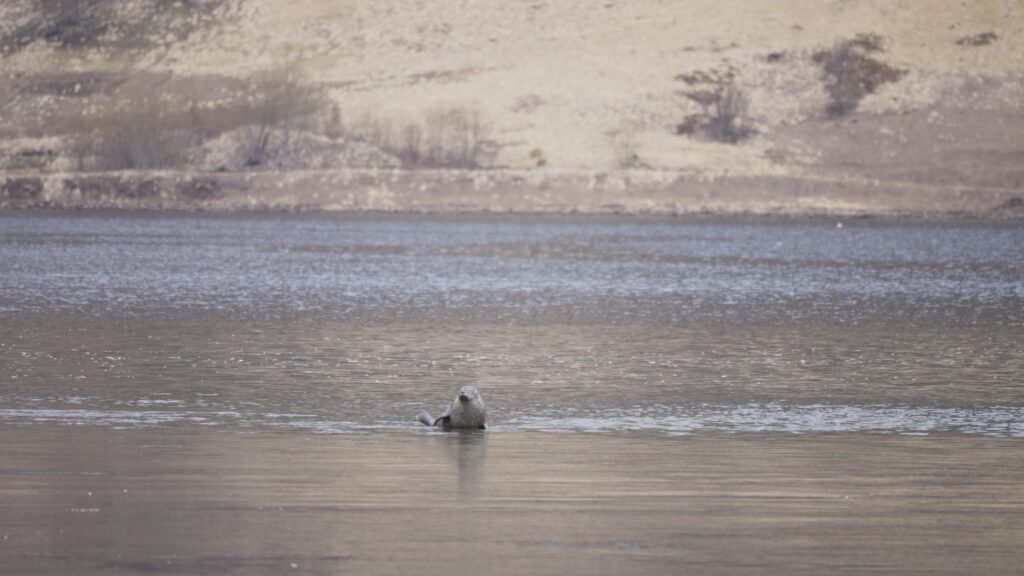
More than orcas: the rich wildlife of Lofoten
Of course, Lofoten isn’t just about whales. The islands are bursting with life all year round, from the cliffs to the coastline. Here are just a few of the animals you might cross paths with, along with their Norwegian names:
- White-tailed sea eagles (Havørn) – These enormous birds of prey rule the skies and are often spotted gliding over the fjords.
- Puffins (Lunde) – In the summer months, these bright-beaked birds nest on the cliffs, drawing nature photographers from around the world.
- Harbor seals (Steinkobbe) and otters (Oter) – Look for them lounging on rocks or darting through kelp beds in quieter bays.
- Reindeer (Rein) – Occasionally spotted inland, especially in more mountainous or less-traveled parts of the archipelago.
- Moose (Elg) – Though not seen every day, moose do inhabit the larger islands and are among the most iconic land mammals in Norway.
- Red foxes (Rødrev) – Common across the islands, foxes can often be seen in both rural and semi-urban settings.
- Seabirds (Sjøfugl) – Beyond puffins, guillemots, cormorants, and kittiwakes form noisy colonies along the cliffs, especially in protected coastal zones.
This incredible variety makes Lofoten a dream destination for wildlife watchers, whether you’re trekking along a mountain trail, paddling a quiet inlet, or sitting quietly on a rocky outcrop with binoculars in hand. a dream destination for wildlife watchers, whether you’re trekking along a mountain trail, paddling a quiet inlet, or sitting quietly on a rocky outcrop with binoculars in hand.
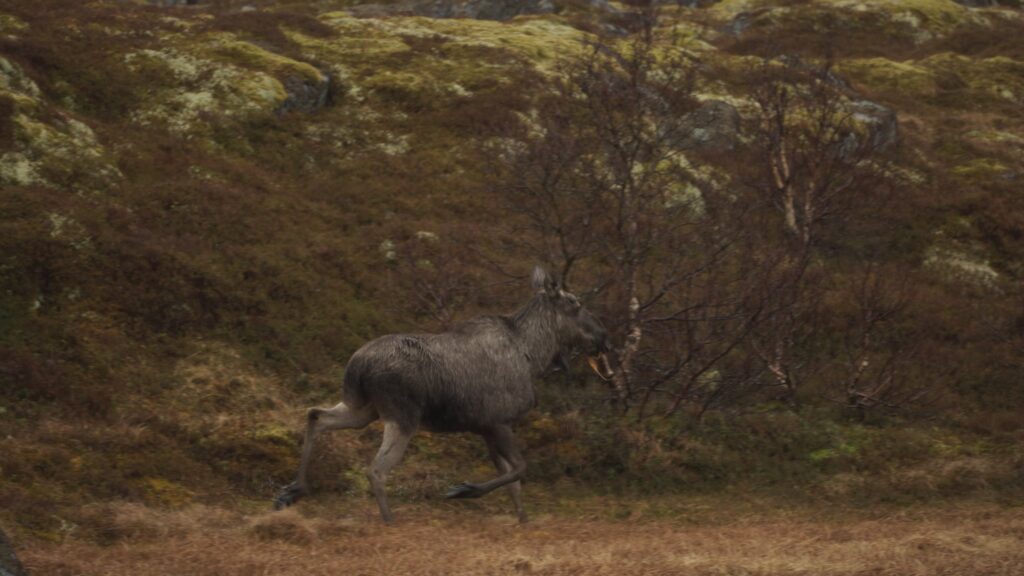
Where to spot wildlife in Lofoten: top locations for animal encounters
| Location | Wildlife Highlights | Best Time to Visit |
| Vestfjorden | Killer whales, herring shoals | November–January |
| Henningsvær area | Puffins, sea eagles, seals | May–August |
| Laukvik | Otters, orcas, eagles | September-June |
| Moskenesøya beaches | Reindeer, seabirds, foxes | Spring and Autumn |
| Trollfjord | Sea eagle safari, marine life | Late Spring–Early Autumn |
What orcas are really up to: behaviors worth watching
If you want to get more out of your time watching killer whales, it helps to know what you’re seeing. Orcas are incredibly smart, social animals, and their behaviors are as fascinating as they are beautiful to witness. Here are a few things to look out for:
- Spyhopping – When a whale pokes its head vertically out of the water for a better view. It almost looks like it’s checking you out.
- Tail slapping – A dramatic smack of the tail against the surface. It might be a way to stun fish or communicate with other whales.
- Breaching – That incredible moment when an orca launches out of the water and lands with a splash. It’s thought to be both playful and communicative.
- Carousel feeding – A team hunting technique where whales circle schools of herring, bunching them into a tight ball before diving in to eat.
Seeing these behaviors up close, especially from the quiet of a kayak, gives you a front-row seat to the intelligence and teamwork these animals are known for. It’s not just exciting—it’s genuinely humbling.
How to watch wildlife without leaving a trace
Lofoten’s wild beauty comes with responsibility. The region’s delicate ecosystems need us to be thoughtful visitors. If you’re planning to spend time with its wildlife, here’s how to do it respectfully:
- Give animals space – Always stay at a safe distance, especially from whales and nesting birds.
- Keep quiet – Let the sounds of nature take over. Silence also means a better chance of seeing animals behaving naturally.
- Don’t feed them – It’s tempting, but it can harm their health and change their behavior.
- Stick with experienced guides – They know the land, the animals, and how to minimize impact.
- Take everything with you – Whether it’s a snack wrapper or camera battery, leave no trace behind.
These simple steps help make sure that future travelers can experience the same raw beauty you’re enjoying now.
Why guided experiences aren’t just easier—they’re better
Exploring Lofoten on your own can be magical, but going with a guide like Kristian turns the journey into something deeper. It’s not just about ticking off sightings or following a route—it’s about seeing through the eyes of someone who’s lived and worked with this landscape for years.
Guided tours with Purpose Paddling feel less like a commercial outing and more like being invited into a rhythm of life here: one where time slows down, nature leads the way, and you’re fully present. With small groups, quiet paddles, and stories that connect you to the land, these experiences create a space where wonder and awareness meet.
It’s not about being a tourist. It’s about being part of something—if only for a little while.
Weather and conditions: planning for Arctic elements
Lofoten’s dramatic and often unpredictable weather can enhance the mystique of the landscape but also demands preparation. Wildlife sightings—particularly of killer whales—are often tied to seasonal changes and fish migrations, but also depend on sea conditions and visibility.
| Season | Conditions | Wildlife Focus |
| Winter | Cold, stormy, low light | Orcas, sea eagles, seals |
| Spring | Milder, longer days | Migrating birds, moose |
| Summer | Midnight sun, calmer seas | Puffins, otters, hiking-friendly |
| Autumn | Crisp, colorful, quiet | Foxes, seabirds, transitional mix |
Beyond killer whales: other marine giants of Lofoten
While orcas are the headline act, they’re not the only marine giants in these waters. With a bit of luck and good timing, you might also spot:
- Humpback whales – Famous for their acrobatics and haunting underwater songs.
- Minke whales – Smaller and often curious, sometimes coming closer than expected.
- Porpoises and dolphins – Fast, playful, and frequently seen near boats and coastal cliffs.
Your best bet for seeing these is during late autumn and early winter, when the feeding activity in the fjords reaches its peak.
Capturing the moment: wildlife photography tips for Lofoten
With its dramatic peaks, golden Arctic light, and rich wildlife, Lofoten offers a canvas that seems made for photography. Whether you’re aiming to capture the glistening back of an orca cutting through the water or a puffin framed against a cliffside nest, every moment in Lofoten can turn into a story through your lens.
But photographing wildlife here isn’t just about pointing and shooting. Conditions change fast, animals are unpredictable, and the light, while stunning, is fleeting. Here’s how to make the most of your time behind the camera:
- Use a telephoto lens (300mm or longer): Wildlife in Lofoten tends to keep a respectful distance, and so should you.
- Shoot in burst mode: Animals don’t pose. They leap, dive, flap, and disappear. Burst mode increases your chances of freezing that perfect moment.
- Protect your gear: Lofoten’s weather is famously moody. Waterproof cases, lens hoods, and microfiber cloths are essentials.
- Learn animal behavior: The more you know about your subject, the better your timing will be.
- Utilize natural light: In winter, the golden hour is stretched into a golden daylight. Plan your outings to catch it.
- Steady your shots: Especially when on water, use higher shutter speeds or stabilizing gear.
- Be patient, be present: Some of the best moments happen when you put the camera down. Balance your time between shooting and simply being there.
Cultural and natural harmony: what Lofoten teaches us
There’s something about Lofoten that gets under your skin—not just the rugged beauty or the wildlife, but the way life here flows with the rhythms of nature. This is a place where the sea still feeds the villages, where the mountains shape the weather, and where people live close to the land because they always have.
For Kristian Louis, founder of Purpose Paddling, that connection runs deep. Before leading guided kayak tours through Lofoten’s fjords, Kristian spent years paddling to the region’s remote beaches and islands—not to explore, but to clean. He hauled plastic and debris from places most people never see, driven by a simple question: What if we could protect these places by helping others fall in love with them?
That mission eventually led to Kristian staring in the The North Drift, a powerful documentary showing how even a single piece of plastic can travel the ocean and end up on a pristine Arctic shore.
Today, each tour Kristian leads is an extension of that story. It’s not just about spotting orcas or discovering hidden beaches—it’s about slowing down, paying attention, and realizing that your presence here matters. Guests are encouraged to paddle with intention, to listen to the water, and to understand the delicate balance that keeps this wild place alive.
In Lofoten, the line between culture and nature is beautifully blurred. Joining a sunrise paddle or pausing to watch sea eagles soar isn’t just a bucket-list moment—it’s a quiet reminder that stewardship begins with appreciation. And when travel is rooted in purpose, it has the power to leave more than footprints—it leaves understanding.
